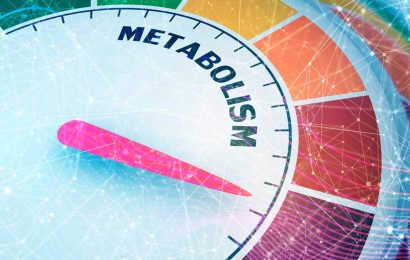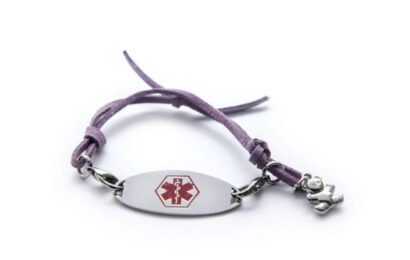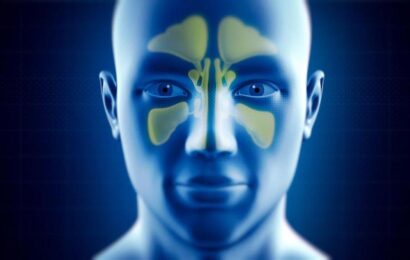We’ve all heard the saying that someone “died of a broken heart” after losing a loved one. This expression is generally used figuratively — meaning, to describe the crushing loss one feels from heartbreak. Dying of a broken heart, however, is more than just a line used in a novel or movie — it’s an actual medical syndrome, and some people really CAN die of a broken heart. But who is at risk? And does having diabetes play a role?
What is broken heart syndrome?
Broken heart syndrome, or stress cardiomyopathy, is definitely for real, although it’s relatively uncommon. First described in Japan in 1990, this condition mimics symptoms of a heart attack, and it can occur when a person experiences sudden physical or emotional stress. When this happens, damage to the left ventricle (the bottom left portion of the heart) occurs, causing it to balloon outwards. The shape of the ventricle looks like a takotsubo pot, a Japanese vessel used to trap octopuses (hence its other name, takotsubo cardiomyopathy).
Because the ventricle is weakened, the heart can no longer pump blood as well as it should. This condition can be fatal, but fortunately, broken heart syndrome is treatable and most people make a full recovery.
To get cutting-edge diabetes news, strategies for blood glucose management, nutrition tips, healthy recipes, and more delivered straight to your inbox, sign up for our free newsletters!
What are the symptoms of broken heart syndrome?
Broken heart syndrome can closely mimic symptoms of a heart attack. Symptoms may include:
- Sudden and severe chest pain
- Shortness of breath
- Arrhythmias (irregular heartbeats)
- Fluid in the lungs
- Low blood pressure
- Loss of consciousness
Because chest pain and shortness of breath are primary symptoms, a person with this condition may initially be misdiagnosed as having a heart attack. If you or a loved one is have any of these symptoms, seek emergency medical care right away.
What causes broken heart syndrome?
Stress, both emotional and physical, is often the cause of this condition, although up to 30% of people have no identifiable trigger at the time of their initial symptoms, according to the website Johns Hopkins Medicine.
Examples of emotional triggers include:
- Loss of a loved one
- Receiving bad news
- Divorce
- Grief
- Anger
- Surprise
- Fear
- Financial loss
- Public speaking
- Domestic abuse
Examples of physical stressors include:
- Asthma attack
- Severe pain
- High fever
- Stroke
- Bleeding
- Surgery
- Low blood sugar
- Illicit drug use
- COVID-19
Although rare, some medications can trigger broken heart syndrome by causing a surge of hormones:
- Epinephrine, used to treat allergic reactions
- Duloxetine (brand name Cymbalta), used for depression and for treating nerve pain
- Venlafaxine (Effexor XR), used for depression
- Levothyroxine, used for thyroid issues
While the exact cause of broken heart syndrome isn’t known, health experts believe that stress hormones, such as adrenaline “stun” the heart, causing changes in heart muscle cells or heart blood vessels that prevent the ventricle from contracting effectively, according to Harvard Health Publishing. In addition, adrenaline may bind to heart cells, causing large amounts of calcium to enter and preventing the cells from beating properly.
What are some complications of broken heart syndrome?
The Cleveland Clinic states that complications are rare, but may include:
- Rupture of the left ventricle of the heart
- Blockage of blood flow from the left ventricle
- Life-threatening heart rhythm problems
- Heart failure
- Blood clot in the left ventricle
- Cardiogenic shock (the heart can’t pump enough blood)
People who have diabetes may have a higher risk of death from broken heart syndrome compared with people who don’t have diabetes. In addition, a case report published in the Current Research in Diabetes & Obesity Journal described a case of a person with diabetes who developed multiple recurrences of this condition that was triggered by diabetic ketoacidosis (DKA). After improved diabetes control, the person recovered well and had no further episodes of broken heart syndrome.
Who is at risk for broken heart syndrome?
While anyone can experience this condition, certain groups of people have a higher risk:
- Middle-aged women, with an increased risk after the age of 55 (the thought is that low estrogen levels may be the culprit). Middle-aged and older women are diagnosed with broken heart syndrome up to 10 times more often than younger women or men of any age, based on a study published in October 2021 in the Journal of the American Heart Association.
- People who have or who have a history of anxiety or depression
How is broken heart syndrome diagnosed?
A physical exam and various tests are used to diagnose broken heart syndrome (and rule out a heart attack). These may include:
- An EKG to measure the electrical activity of the heart.
- Coronary angiogram, which involves injecting a dye into the blood vessels of the heart and taking images. This is done to check for blockages, which could indicate a heart attack.
- Echocardiogram, which uses sound waves to determine if the heart is enlarged and to view how the heart is pumping
- Chest X-ray.
- Cardiac MRI, which creates detailed images of the heart.
- Blood tests to check for high levels of cardiac enzymes.
Indicators of broken heart syndrome are:
- •he appearance of symptoms after a stressful physical or emotional event, as listed above
- An abnormal EKG
- A quick rise in blood cardiac enzymes (but levels aren’t as high as they would be in the case of a heart attack)
- No blockages in the heart arteries
- An enlarged left ventricle
How is broken heart syndrome treated?
There isn’t a standard treatment for this condition; initially, treatment might be the same as treatment for a heart attack until a diagnosis is confirmed. People usually need to stay in the hospital while they recover. It may take a month or longer to fully recover, too.
Medications are generally prescribed to help the heart recover and also reduce the strain on the heart. These may include:
- Angiotensin-converting enzyme (ACE) inhibitors
- Angiotensin II receptor blockers (ARBs)
- Beta blockers
- Diuretics
- Blood thinners to prevent a stroke
A health care provider may recommend cardiac rehabilitation, as well as techniques to help manage stress. The underlying cause of broken heart syndrome, especially any physical triggers, may warrant changes to the treatment plan. Luckily, this condition is treatable and there is a low risk of it happening again.
Can broken heart syndrome be prevented?
While health experts believe that certain physical and emotional factors can trigger broken heart syndrome, it’s not clear why this occurs in some people and not others. It’s also not known why some people get this condition without any clear triggers. In the meantime, steps that you can take to help lessen the chance of this happening to you include:
- Focusing on managing your diabetes
- Focusing on managing other conditions, such as asthma or thyroid issues
- Reviewing your medications with your provider
- Seeking treatment for depression or anxiety
- Finding ways to lessen or manage stress
Want to learn more about protecting your heart? Read “Be Heart Smart: Know Your Numbers,” “Does Diabetes Hurt Your Heart?” “Fight Off Heart Disease With These Five Heart-Healthy Foods” and “Seven Signs of an Unhealthy Heart.”





